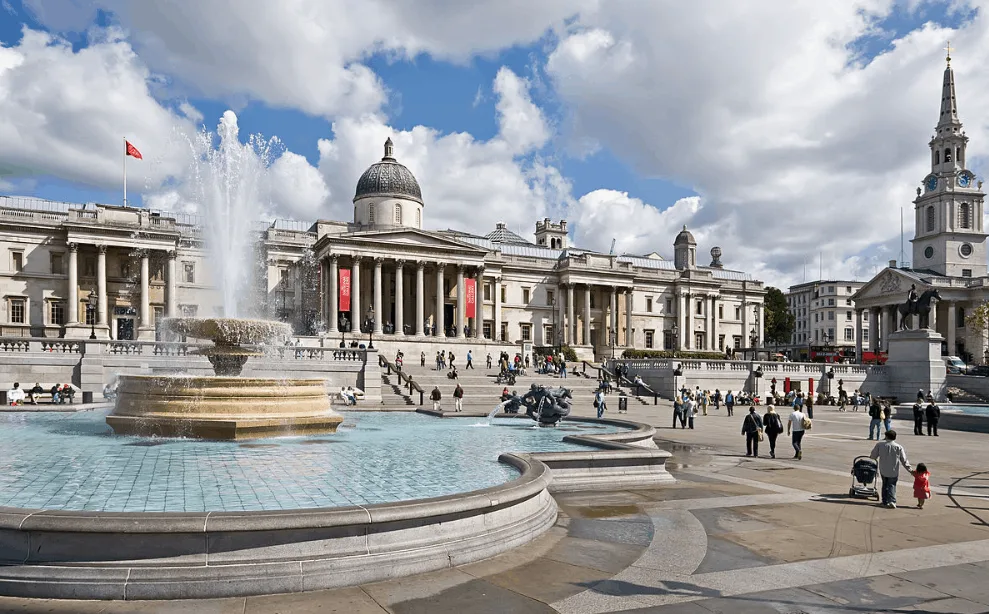It’s one of the most famous tourist spots lined with some of the most stunning buildings in London.
In this post, you’ll discover the ultimate list of facts about Trafalgar Square, an important square in the city!
1. It’s located right in the center of London
One of the most interesting facts about Trafalgar Square is that it’s located right in the center of London, but this doesn’t have a geographical reason.
The real reason is because of a funeral procession for Queen Eleanor in the year 1290. The location where one of the crosses was placed during this procession was “Charing Cross,” the area where Trafalgar Square is located.
Trafalgar Square is part of the City of Westminster in Central London, just west of the historical city center and Southwark (with the Shard, and just north of the Houses of Parliament, Big Ben, and the London Eye.
Right now, Charing Cross is the location used to measure the exact distance of other locations to London.

2. It got its name during the Napoleonic Wars
The original plan was to give the name of William IV to the square after it was commissioned back in 1826. This was to be in honor of his ascent to the throne.
It wasn’t until the year 1835 that a final decision was made and the square was going to be named after the “Battle of Trafalgar,” a naval battle of the coast of Cape Trafalgar in the southwest of Spain.
This was a major victory as Napoleon was planning to take control of the British Channel and launch an invasion of England, which would have been devastating. Therefore, one of the most important squares in London was named after this British victory over the combined forces of France and Spain.
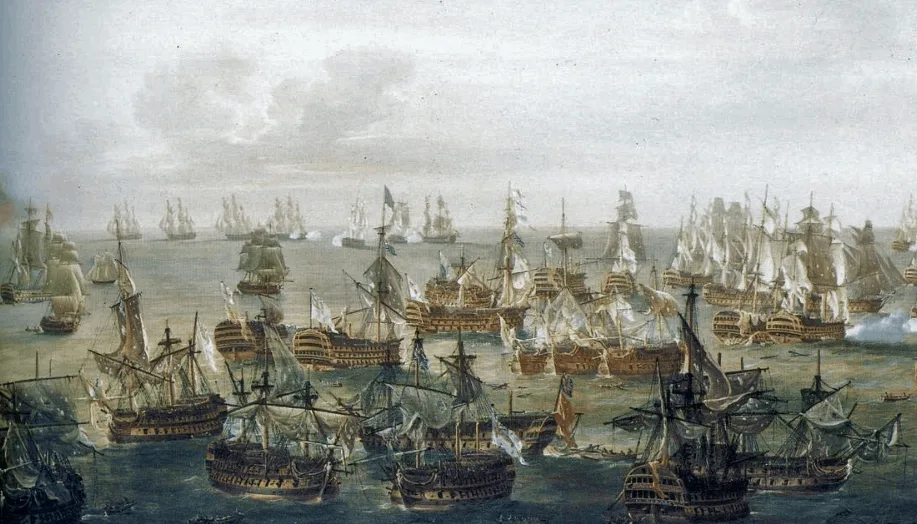
3. Its most famous monument wasn’t included in the original plan
One of the most prominent landmarks on Trafalgar Square is a monument called “Nelson’s Column, ” erected in honor of Admiral Lord Nelson who led the British Royal Navy to victory against the combined forces of Napoleon’s France and Spain.
The original height of the Corinthian Column with a statue of Nelson on top of it was 218 feet and 3 inches (66.52 meters), but received widespread objections from Londoners. It was eventually reduced to a height of 145 feet and 3 inches (44.27 meters).
The column wasn’t included in the original plan, and the architect, Charles Barry, wasn’t in favor of adding the column to Trafalgar Square because it would diminish the visual impact of the National Gallery.
It got built anyways and was completed with the statue of Nelson on top of it in November 1843.
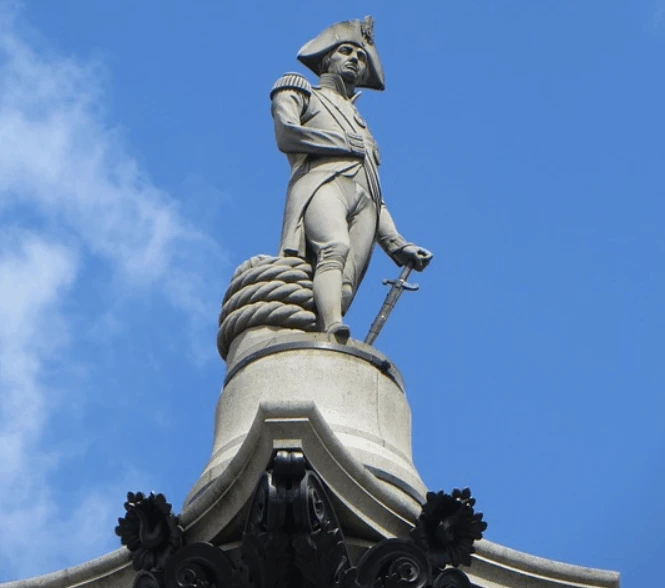
4. The old fountains have moved across the pond
In the late 1930s, it was decided that the old fountains should be replaced with new ones that would commemorate two famous British Admirals who fought in World War I, Lord Jellicoe and Lord Beatty.
So what to do with the old fountains, right?
One of the most remarkable facts about Trafalgar Square is that its two old fountains are still active today! They ended up being sold to Ottawa, a city in Canada, where they still perform their duty as they did on Trafalgar Square.
One can be found in Ottawa’s Confederation Park and the other one on the east side of the Legislative Building in Regina.

5. An unscrupulous seed seller made tons of money on Trafalgar Square
No, Trafalgar Square isn’t the San Marco Square in Venice, but it used to be equally famous for its feral pigeons. In fact, there were so many pigeons that their total population was estimated to be almost 35,000.
With so many pigeons comes opportunity, one savvy businessman called Bernie Rayner once thought.
His idea was simple: buy huge bags of grain, put little bits in very small bags, and sell these for an enormously inflated price so tourists could feed these fat birds.
Kids loved it!
And so did Bernie…
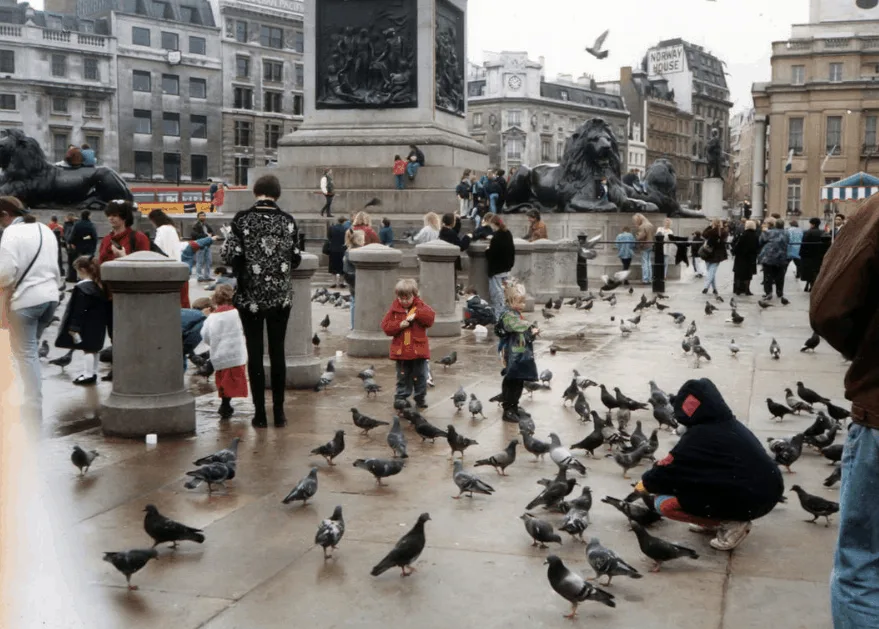
6. Pigeons caused a whopping £140,000 in damage
All good things must come to end, and so did the lucrative business of Bernie. When it was time for some renovations, it was discovered that the pigeons had caused £140,000 in damage to Nelson’s Column alone!
Was this Bernie’s fault?
Well, yes, directly in fact, because the damage was caused by the pigeon’s droppings. This left the city with no other choice than to ban the feeding of pigeons on Trafalgar Square.
In return, Bernie gathered some fellow bird lovers in a final attempt to obtain a High Court order, but to no avail.
Pigeons are no more on Trafalgar Square since 2007.

7. The Norwegians send a Christmas present once a year
Christmas is one of the happiest times of the year, and giant Christmas trees are installed at famous places all over the world.
As one of the most famous spots in all of London, Trafalgar Square is no different.
What makes the Christmas tree on Trafalgar Square, a Norway Spruce, special though is that it’s actually donated by Oslo, the capital of Norway!
One of the most amazing facts about Trafalgar Square is that they have done so since 1947 as a token of gratitude towards Great Britain for helping them out during World War II and allowing the Norwegian prince Olav to live in exile in London during the war.
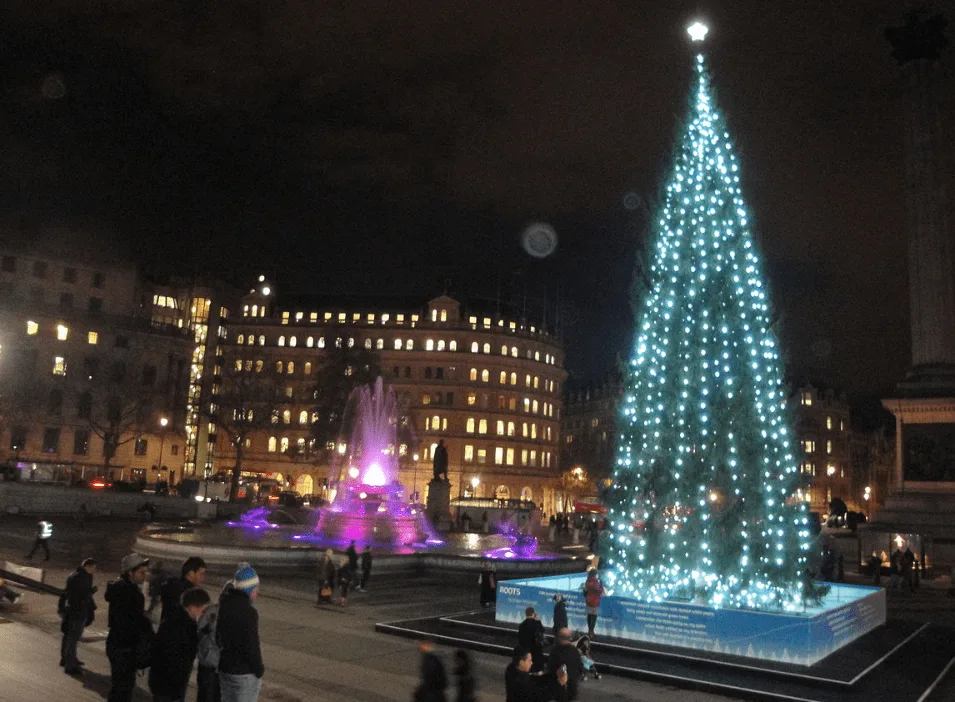
8. It’s the most popular place to hold demonstrations
Ever since the square was opened to the public on May 1, 1844, it has been a popular place for social gatherings and demonstrations. So much that there was actually a ban on large rallies on the square until the 1880s.
This all ended when the emerging Labour movement started holding protests on the square which culminated in events known as Black Monday (February 8, 1886) and Bloody Sunday (November 13, 1887).
Ever since Trafalgar Square has been the favorite spot in all of London to hold demonstrations for numerous purposes.
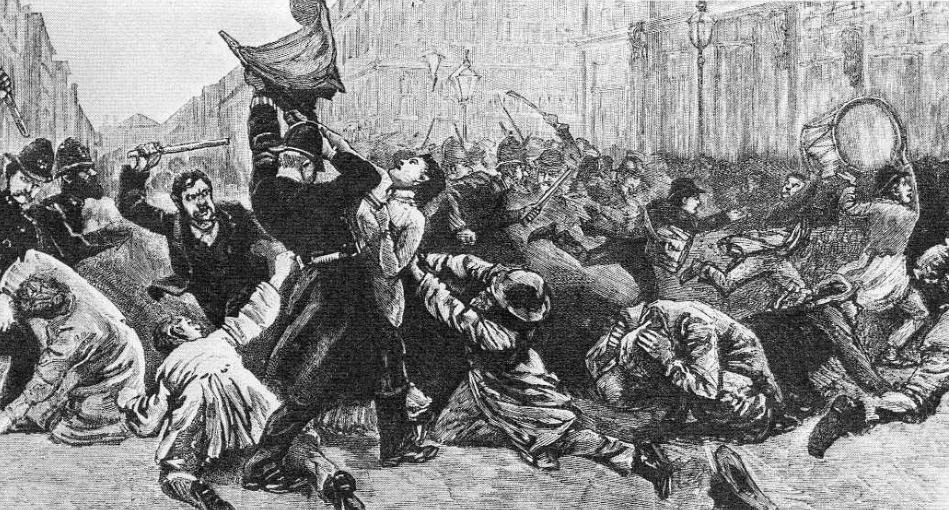
9. Who would have thought that this song would be sung on Trafalgar Square?
Do you remember the reason why Trafalgar Square is called the way it is? Yes, that’s right, in honor of a victory in battle over the French.
Now imagine telling someone in the first part of the 19th century that thousands of Londoners would be singing the French National Anthem, the Marseillaise, on Trafalgar Square, in full voice.
They would have thought you were crazy right?
It really happened in a moment of solidarity when the French capital Paris was hit severely by terrorist attacks on November 13, 2015.
It really shows how far we have come in society!
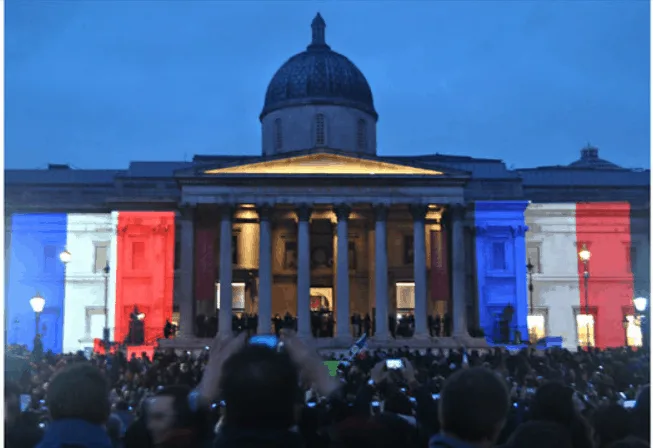
10. In this book, Trafalgar Square is called “Victory Square”
In the dystopian future in the year 1984, a disgruntled party member dreams of rebellion. That’s the core story of George Orwell’s “Nineteen-Eighty-Four,” a fictional political novel that was published in 1949.
In the book, Great Britain is referred to as “Airstrip One” and has become a province of a superstate named Oceania.
Trafalgar Square was renamed “Victory Square,” and Nelson’s Column was replaced by a monument honoring the party leader, Big Brother.
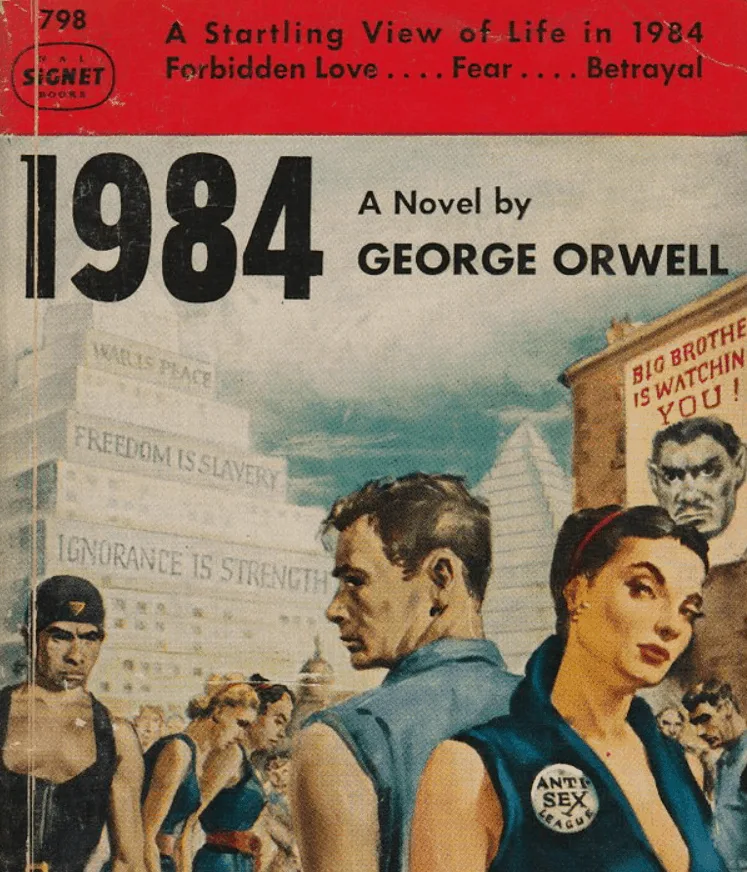
11. You can “build” Trafalgar Square right at home
Looking for a new hobby? Perhaps something creative? How about actually building Trafalgar Square right from the comfort of your own home?
Since 2019 you can because there’s a Lego set available that allows you to build the square and all its monuments, including the fountains with its lions, Nelson’s monument, the National Gallery, and even double-decker buses.

12. It has been the setting of multiple famous movies
Trafalgar Square was hot in the 1960s, and so was London. So much that the city was referred to as “Swinging London” and the decade as the “Swinging Sixties.”
Trafalgar Square was the ultimate representation of London in this era, so it was used in various movies and television programs back then. These include “The Avengers,” “Casino Royale,” “Doctor Who,” and “The Ipcress File.”
